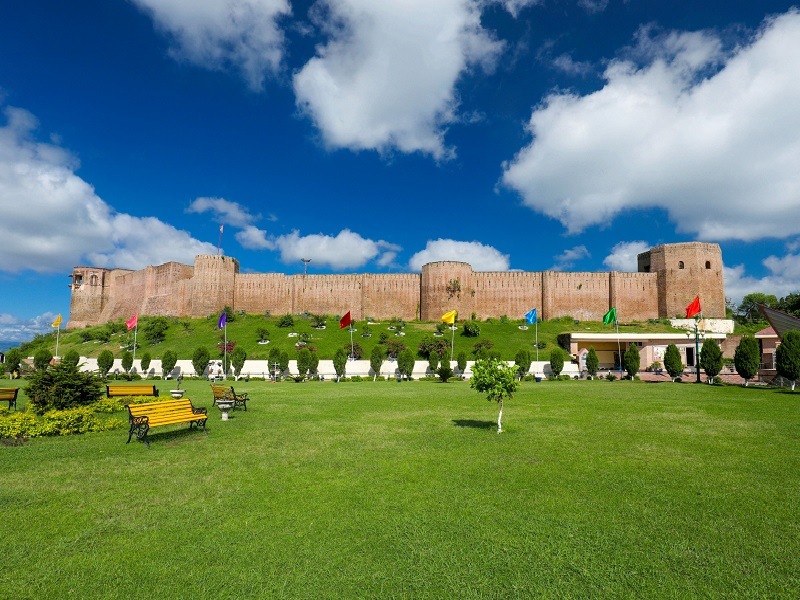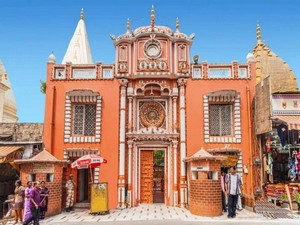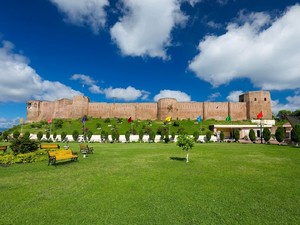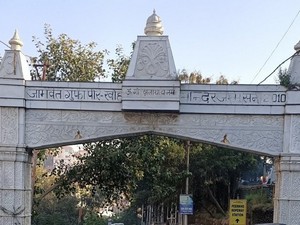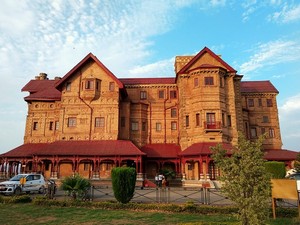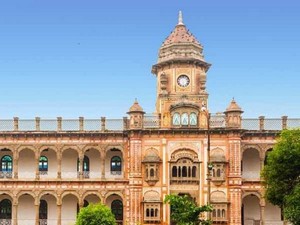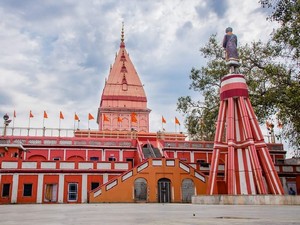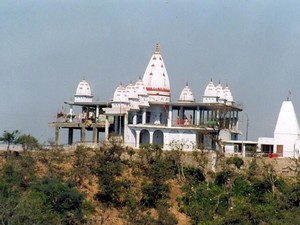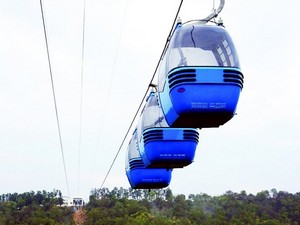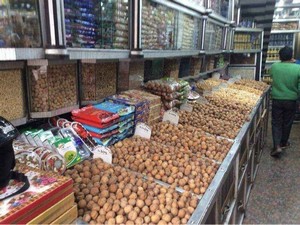Bahu Fort - History, Timings & Entry Fee
![]() Historical
Historical
 #2 of 17 Places to Visit in Jammu
#2 of 17 Places to Visit in Jammu
 Distance (From Jammu Tawi): 4 Kms
Distance (From Jammu Tawi): 4 Kms
 Trip Duration (Including Travel): 1-2 Hours
Trip Duration (Including Travel): 1-2 Hours
 Place Location: On The Left Bank Of The Tawi River
Place Location: On The Left Bank Of The Tawi River
 Transportation Options: Cab / Auto
Transportation Options: Cab / Auto
 Travel Tips: None
Travel Tips: None
At a distance of 4 km from Jammu Railway Station, Bahu Fort is a historic fort located in the city of Jammu, Jammu & Kashmir. Stands tall and sturdy on the left bank of the Tawi River, it is one of the popular places of heritage in Jammu & Kashmir, and among the must-visit places as part of forts Jammu tour packages.
Perhaps the oldest fort and edifice in Jammu, Bahu Fort is believed to be constructed around 3,000 years ago by Rajput Raja Bahulochan, the brother of the traditional founder of Jammu, Jambu Lochan. The earlier structure of the fort was rebuilt in 1585 CE by Autar Dev, the grandson of King Kapoor Dev. The grand fort has been reconstructed, renovated, restored, and repaired by many rulers from different dynasties from time to time. However, the current and final version of Bahu Fort was built by Maharaja Gulab Singh in the 19th century and was further refurbished by Maharaja Ranbir Singh during his rule.
Perched at an elevation of 325 m, Bahu Fort was built in a Mughal style of architecture and is decorated with terraced gardens, waterfalls, and flowers. The entrance of the fort is magnanimous, so intimidating and massive that it can allow the passage of elephants into the fort. The fort was equipped with a royal stable, an enormous lake for boating, and a cable car system. The thick and sturdy walls of the fort are connected by eight octagonal towers that are hollowed with an enclosed space for the use of house guards. The fort also houses a beautiful 15 feet deep pond which lies adjacent to a pyramidal structure, which was mainly used to store arms and ammunition. The fort is also equipped with an underground prison chamber and a secret passageway.
Besides, the fort also acts as a religious place, and within its precincts has a temple dedicated to the Hindu goddess Kali, the presiding deity of Jammu. The temple is known locally as the 'Bawe Wali Mata' temple. Raised on a 3.9 feet high platform, it is built entirely of white marble. In the past, animal sacrifice was practiced at this temple, which has since been discontinued. Today, a priest sprinkles holy water over the animal (usually a sheep or goat) and then lets it go free. Many devotees firmly believe that it is the deity residing in the Bahu Fort that protects the city of Jammu from Pakistani air attacks. One can also see a large group of Rhesus monkeys in the temple precincts.
Also, the forest area that surrounds the fort has been developed into a well-laid-out park called the 'Bagh-e-Bahu', from where one can get a panoramic view of Jammu city. The terraced garden is full of beautiful fountains, an artificial waterfall, dense tall trees, and colorful flowers. The garden is decorated with aesthetic stone sculptures that fit in perfectly with the green background. Besides, one can also visit the Aquarium located near the fort. It is the largest underground aquarium in the country and exhibits an impressive collection of around 400 species of fish.
The fort hosts a popular Hindu festival known as 'Bahu Mela' that is celebrated twice a year, during March/April and September/October. During this event, special stalls are opened near the fort area selling sweets, flowers, incense, coconuts, red cloth, and so forth, to make special offerings to the deity in the temple. Tuesday and Sunday are the special days to worship at the temple which attracts a large number of pilgrims.
Timings: 10 AM - 5 PM
Entry: Rs. 10 for Person & Rs. 50 for Camera



